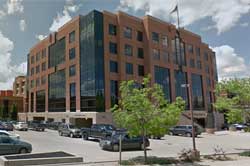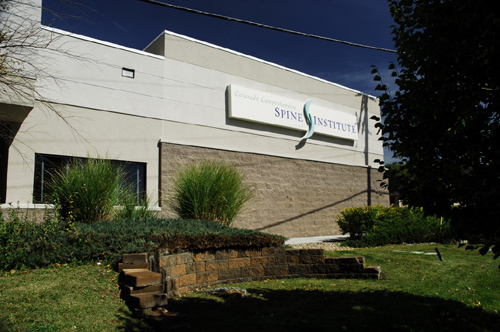Locations

Fax: (303) 762-9292

Nonoperative Treatment: Lumbar (Low Back) Bracing

When you visit our practice for treatment, your doctor may recommend you wear a brace. Some patients find braces / bracing uncomfortable or inconvenient, but they serve a very important purpose. Braces support the low back, and immobilize and stabilize the lumbar spine such as after an injury or surgery.
About Lumbar Braces
Low back braces are external devices that support the spine’s muscular and bony structures.
In the past, many spine patients were required to wear heavy plaster casts. Fortunately, patients that must wear braces today benefit from lighter weight plastic braces that have been designed with the patient’s comfort in mind. Lumbar races are categorized as soft or rigid. Soft elastic type braces provide muscular support while allowing movement. Rigid braces are used to restrict movement.
Soft Lumbar Corset
A soft lumbar corset is primarily used to provide low back muscular support. A lumbar corset may be used for individuals who have extensive arthritis or mild lumbar instability. Many times, additional muscular support provides low back pain relief. The corset may also act as a reminder to avoid excessive low back motion and may help encourage proper body mechanics, such as good posture.
Our patients are often concerned that excessive use of such a corset might weaken the lumbar muscles. If you use the brace constantly, this will likely occur. For this reason, the specialists at our practice do not recommend continuous, daily use of a lumbar corset. Rather, we suggest its use in a task specific manner. The brace should be employed when you are involved in activities that place your back at risk. When this at risk activity is finished, the brace should be removed.
Use of such a brace should also be done in conjunction with a lumbar strengthening exercise program. Ideally, the lumbar strengthening exercise program will increase muscle strength, which makes the brace unnecessary. Unfortunately, such a program takes many months to have this effect. The brace can help support the spine until muscle strength can do the job.
The lumbar corset is also used after most lumbar spinal surgeries to provide additional low back support, thus preventing muscles from rapidly fatiguing during recovery. The brace also offers that gentle reminder that activities and motion must be limited for healing to occur.
The purpose of the brace is not for complete immobilization. As such, feel free to use the lumbar corset when it helps, and take the brace off when it no longer helps. Most patients will find the brace to be quite helpful for the first 6-weeks after surgery, with diminishing use of the brace thereafter. We recommend that initially the brace be used whenever you are out of bed for more than 15-minutes. You can begin to wean yourself from the brace whenever you are ready.
Rigid Lumbar Braces
A rigid brace is used when, despite surgical correction (or in place of surgical correction), spinal stability has not been fully achieved. For example, some types of spinal fractures can be managed without surgery. Such fractures have their own inherent stability. The brace provides additional immobilization, which should safely allow the fracture to heal with a minimal risk of further injury. Under these circumstances, this brace must be worn for approximately 3-months whenever the patient is out of bed.
After undergoing a very complex spinal surgery, and despite use of internal fixation, the spine may not be satisfactorily stabilized. The reason for this may have to do with the severity of the instability, lack of bone quality, location of the surgery, or nature of the deformity. In this situation, a rigid brace may be needed. Here again, the brace is specifically for immobilization and support. It should be worn whenever the patient is out of bed for more than 10 minutes. This brace will be worn for approximately 3-months after surgery. Your surgeon will let you know if such a brace is necessary.
Conclusion
Braces can be an essential component to the successful treatment of your spinal disorder. Although lumbar braces may require you to restrict some activities, or form different habits, the support braces provide will speed your healing and may prevent further injury. Please discuss any concerns you have about bracing with your doctor.








